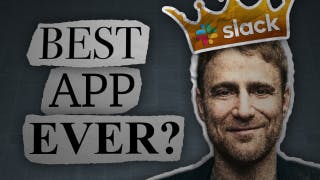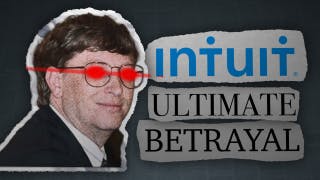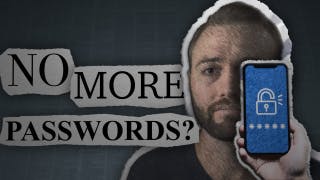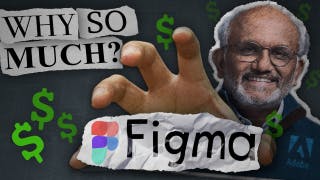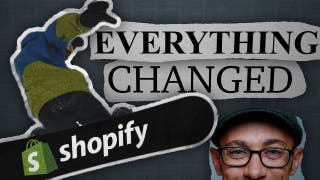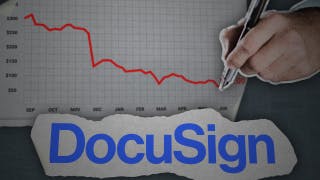
How Mailchimp fights spam
Spam. We all hate getting it and no one wants to end up sending it.
When was the last time you checked your spam folder? You’ve got anti-virus solutions, political ads, the classic “enhancement” emails… and as a user you probably don’t look at it much. And you’d never intentionally SEND spam, right?
Email is the backbone of any successful SaaS marketing campaign. More than half of the global population uses it. From creating powerful newsletters to offering customer support, the use cases of email in SaaS is ubiquitous. But the threat of spam lurks beyond the click of every send button. It’s a punishment so dastardly that it can torpedo the hopes and dreams of the sender.
Spam messages account for roughly half of all email traffic. And roughly one out of every 10. So while you may not intentionally send spam, if you’re not careful, a series of bad campaigns can snowball into you being blacklisted from customers.
So, how do you fight Spam? There are dubious methods, but this won’t build trust with your audience. Instead, we need to look to experts in the space like Mailchimp. While today Mailchimp boasts over 13 million users, the bootstrapped company was not an overnight success story. They had no outside funding to rely on, so success was predicated on keeping deliverability rates high while striving to be a notable SaaS brand that folks could learn from. All of this culminated in a $12-billion purchase by Intuit, thrusting Mailchimp into the bootstrapped hall of fame…
Lessons from the Top
Mailchimp CEO Ben Chestnut has the answer to beating Spam after decades and a metric ton of emails sent. I’ll tell you what that is, but first we’ve got to get into some background on Mailchimp and the email marketing space.
Today, email marketing is essential to any marketing strategy. It’s an effective way to grow your brand as well as connect with, engage with, and nurture your customers. But, you have to get it right. And unfortunately most companies don’t.
Mailchimp, however, has not only managed to get it right, it’s also managed to stay out of spam folders. And its strategy is pretty simple — always provide really good content.
- Be useful
Avoid the fluff completely. Be authentic and focus on value. In a time when we’re inundated with content, providing valuable and relevant content is do or die. Take the time to provide the quality and value your customers deserve and want. After all, your content is representative of your business. The more value you provide, the more customers you acquire, and more importantly, the more you keep. - Think outside the traditional marketing box
Mailchimp has embraced being different and, ultimately, it’s what has made them stand out. They’re not afraid to go against the grain and be bold when it comes to its marketing campaigns. Don’t follow what everyone else is doing, instead embrace what makes your business unique and use it. Try new things. Take chances. - Be accessible to more
Mailchimp's willingness to take chances also crosses over into switching things up when something’s not providing optimal results. In its efforts to stay true to its original goal of helping small businesses establish themselves through inexpensive email marketing, it decided to go freemium — even after years of charging for its service.
Mailchimp's commitment to providing value was and is the perfect complement to freemium. And by making its service free it was able to reach a wider audience, a move that has proven to be extremely fruitful.
Background
In 1978, a marketing manager named Gary Thuerk (Turk) composed an email that he sent out via ARPANET (the predecessor of the Internet). Within this email, Thuerk advertised open houses in Los Angeles and San Mateo where his employer, Digital Equipment Corp, would unveil their latest computers. ARPAnet had several thousand users, but Thuerk targeted the 600 users on the West Coast. Instead of sending individual emails to each user, Thuerk asked his assistant to send one mass email to all the users. He didn’t know it at the time, but Gary Thuerk had just sent what historians claim was the first Spam email. And it worked. As ingenious and uncharacteristic as this marketing tactic may sound, it fetched Thuerk and his company 20 sales over the next three years of open houses at $1 million each. However, the tactic wasn't without its fair share of controversies. In the days that followed, ARPAnet representatives approached Thuerk, warned him, and made him swear never to do it again.

As you'd expect, and in light of Thuerk's marketing success, no one listened to this advice. More and more marketers tried their luck with email tactics in the years that followed. And with webmail providers like Hotmail and Yahoo, it became easier and easier to send email. While some used email for nefarious reasons, there were genuine marketers trying to sell legit products. Unfortunately, even senders with the best intentions ended up going to spam.
It wasn’t until the turn of the millennium that spamming was declared a real menace. Spam filters hadn’t been invented and slow broadband speeds meant loading messages took up precious time. The first real combat against spam in the US was mounted in 2003, and it came in the form of the CAN-SPAM Act. An acronym for "Controlling the Assault of Non-Solicited Pornography And Marketing." The actual meaning of this regulation is weaved right into the words. At its core, the CAN-SPAM Act sets tight regulations for commercial email messages, as well as gives recipients the right to unsubscribe from a mailing list, if and when they want to. An email marketer that violates this law can be subject to some incredibly steep penalties, ranging from fines of $16,000 per spam email to criminal penalties of up to five years in prison. Therefore, it’s absolutely crucial that SaaS marketers have the right tools to avoid these punishments. So how does one get past the spam filter? Well, it’s not time to hear from Ben Chestnut just yet… but the answer begins with the development of email marketing tools.
Early Leaders
Tools for email marketers were primitive in the early 2000s. There was still a gaping hole that needed to be filled — that of designing emails, segmenting recipient lists, marketing automation, and the like. Consequently, several companies rose to fill that gap, with the sole aim of providing impeccable email marketing solutions that would put marketers right into their customers' and prospects' inboxes, and especially, avoid the spam folder. The early lineup itself was star-studded, consisting of companies like Constant Contact, Litmus, and Campaign Monitor. But as they say, the pacesetters aren't always the game-changers. It's those who work the smartest — not the hardest — that take that crown. Enter Mailchimp.
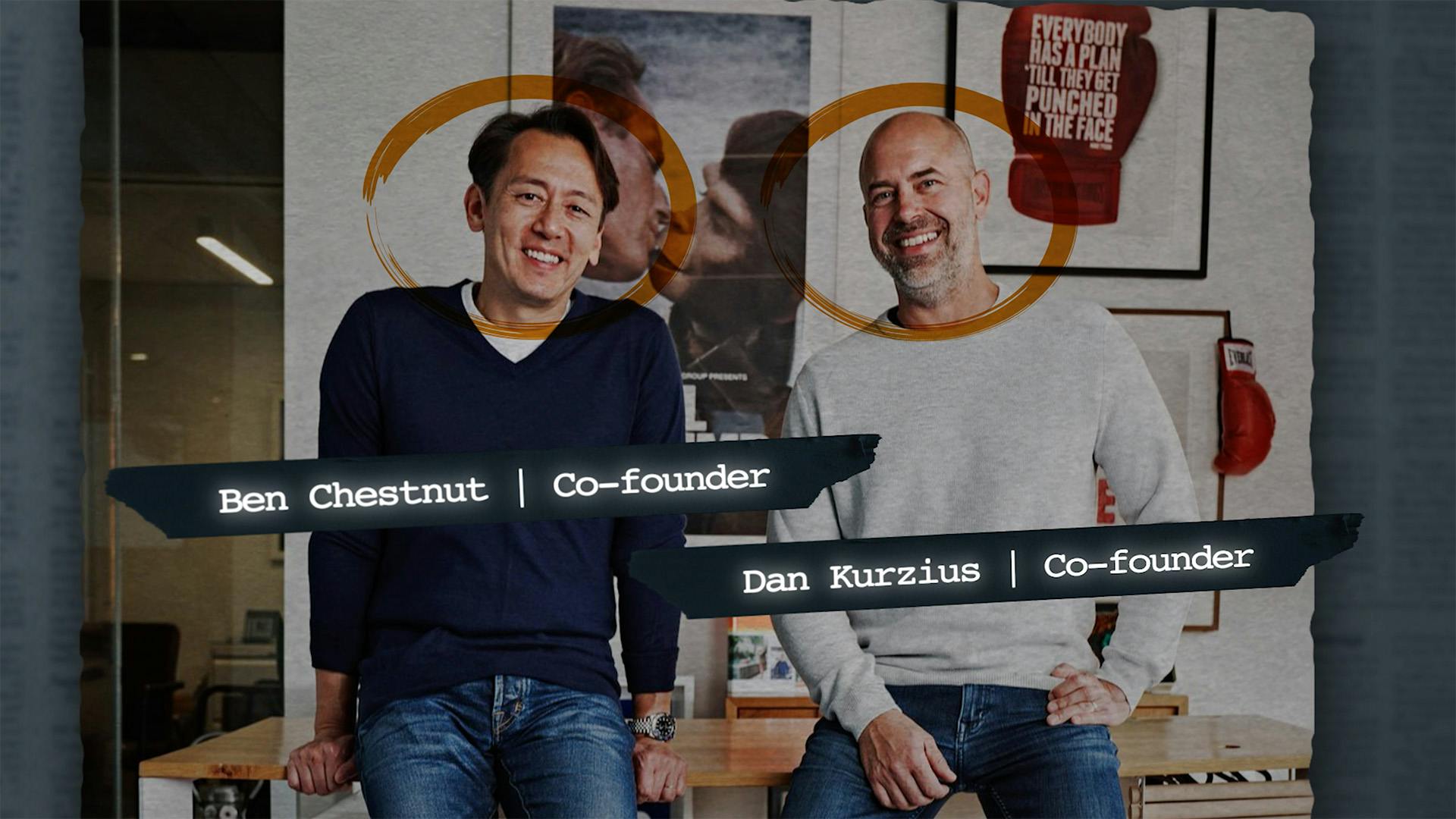
The story of Mailchimp isn't your ordinary get-popular-quickly story. It's a story of patience and lots of it. The premier email marketing service was first launched in 2001 by two ardent web designers, Dan Kurzius and Ben Chestnut. At the time of launching Mailchimp, the two had one goal and one goal only: to help small businesses, like theirs, establish themselves through distinguishable, inexpensive email marketing. They were never in it for the money. As such, they treated the service as a side endeavor. It wasn’t until 2007 that Kurzius and Chestnut decided to put all their eggs in the Mailchimp basket. Email marketing, however, wasn't exactly the best investment in 2007. For starters, spamming was at its all-time high (research has it that spam accounted for 95% of all email traffic that year alone). And people detested the very thought of a commercial email landing in their inboxes. But perhaps even more demotivating for the two co-founders was the fact that better-funded companies were already ruling the email marketing space. But Kurzius and Chestnut didn't give up. If anything, they ramped up their efforts.
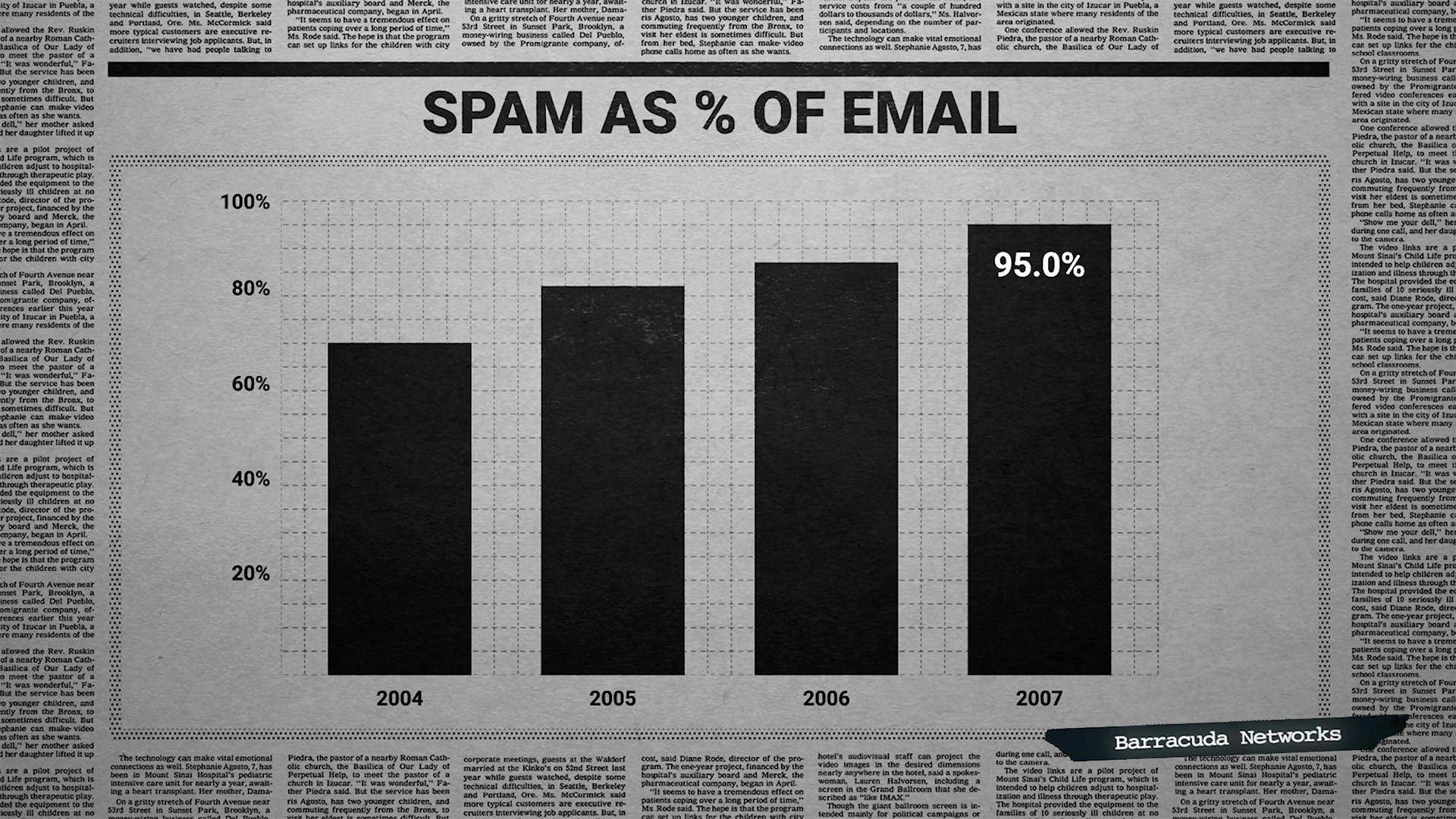
For the better part of its history, Mailchimp has been a bootstrapped company. The company pretty much survived as a self-funded, self-sufficient entity. Mailchimp managed to grow beyond anyone's wildest imaginations. Using the platform, customers are now able to create and manage an audience, configure their email marketing campaigns, and monitor their performance — all on one platform. Mailchimp's growth has been gradual and sometimes brutal, but it has certainly been worth it. In 2021, Mailchimp had a revenue run rate of a whopping $800 million, and was purchased by Intuit for $12 billion.
Reasons for success
What makes Mailchimp one of the best — if not the best — email marketing companies today is the fact that their value is directly tied to the success of their customers. As CEO, Ben Chestnut said, “We grow when your customers grow. It’s free to use MailChimp until their databases get to 2,000 members and then we start charging.” But MailChimp didn’t start out with a freemium offering. For eight years, they charged for the product without a freemium tier. The decision to offer freemium was predicated on the idea that some customers would switch to freemium from paid. However, this was a risk Ben Chestnut and co were willing to take as they would now be able to offer their tools and expertise to a wider audience. The fact that Mailchimp is still around today is proof that a freemium offering (even late in the game) is by no means a death sentence — quite the contrary.
In a world where most email marketing solutions stick with the same branding for years, Mailchimp also stands out for being bold, quirky, and fun with its branding. Over the years, they have had several successful marketing campaigns. But, about five years ago they had a stroke of marketing genius. At the time, many people were curious about Mailchimp and what it actually brought to the table. In response, the company created a one-of-a-kind brand awareness campaign to fill that all-too-obvious curiosity gap. It was dubbed "Did You Mean MailChimp?" To get the campaign up and running, Mailchimp crafted many different sites along with rich, well thought-out promotional social media videos. All these campaigns had one thing in common: their names closely resembled Mailchimp. From KaleLimp to FailChips and JailBlimp, whenever someone looked up these quirky terms, they would bump right into Mailchimp. Occupying many different advertising and social channels meant that Mailchimp was everywhere creative-minded businesses might be, without having to use its real name. That's a marketing masterstroke and it's a hallmark of a truly distinguishable SaaS business.
But how do you run a creative company? What’s the secret ingredient to success? As Ben Chestnut says, “it’s about the people.” Since its origins, Mailchimp has succeeded by empowering employees to be themselves, even with quirky promotional campaigns like "cat hats", or "hats for cats." They’ve established a particular brand by being different. By going against the grain of the usual humdrum SaaS playbook, Mailchimp has invented their own style guide.

Additionally, and the reason you’re all here, Mailchimp knows the answer to defeat spam. Going back to that CNBC interview in 2017, Ben Chestnut’s answer is simple: “Be useful and people will like your content and not block you.” Easier said than done of course, but Mailchimp understands this and they understand that if their users don’t then growth will be stagnant. Through their blog and helpdocs, you can understand strategies and tactics on how to be useful. But perhaps the best tool Mailchimp offers is leading by example with their brand.
Summary
For producing, sending, and managing outstanding newsletters and email marketing campaigns, you need a tool that's customer-facing at its core and one whose features are always improving. Mailchimp is one tool that truly helps SaaS marketers get the job done — faster, better, and with only a pinch of their resources.
But there's a caveat to all this. Even with an effective tool like Mailchimp, your campaigns will still hit a snag if you fail to create relevant, quirky, interesting newsletters. The modern email recipients are savvy and well-exposed, and the only way to lure them in is to be truly authentic and value-focused. Anything less will inevitably see the inside of a spam folder.
At present, the email marketing spectrum is looking promising and Mailchimp is one of many selections. Over the years, Mailchimp has expanded beyond just email marketing services. The company now provides website hosting services, data analysis tools, social media management technology, and a dozen other products; it's essentially a full-fledged marketing platform. Beyond that, innovative works of integrating email marketing with cloud-based and AI technologies suggest that the industry will only get better, more profitable, and certainly more accommodating from here on out.
However, only the SaaS marketers that are willing to break out of their comfort zones and adopt game-changing technologies, like Mailchimp, will ultimately reap the biggest rewards. Mailchimp’s exact success circumstances probably can’t be replicated, but whether you choose them for their services, or as an example to follow, you’re in good hands. Do you use Mailchimp or a different email marketing provider? Let me know.
Do us a favor?
Part of the way we measure success is by seeing if our content is shareable. If you got value from this episode and write up, we'd appreciate a share on Twitter or LinkedIn.
1
00:00:00,000 --> 00:00:02,961
- Junkmail, Mailchimp, and
Intuit coming together.
2
00:00:04,295 --> 00:00:05,505
- Thank you very much.
3
00:00:05,505 --> 00:00:06,339
- Spam.
4
00:00:06,339 --> 00:00:07,173
We all hate it.
5
00:00:07,173 --> 00:00:09,426
And none of us want to end up sending it.
6
00:00:09,426 --> 00:00:12,220
I'm sure that you've
got antivirus solutions,
7
00:00:12,220 --> 00:00:15,765
political ads, the classic
enhancement emails.
8
00:00:15,765 --> 00:00:16,599
As a user,
9
00:00:16,599 --> 00:00:17,976
you probably don't look at that much
10
00:00:17,976 --> 00:00:21,646
and you'd never intentionally
send spam, right?
11
00:00:21,646 --> 00:00:25,150
Spam messages account for
roughly half of all email traffic
12
00:00:25,150 --> 00:00:28,028
and roughly one out of every
10 commercial emails sent
13
00:00:28,028 --> 00:00:29,988
is considered spam..
14
00:00:29,988 --> 00:00:31,406
So how do you fight spam?
15
00:00:31,406 --> 00:00:33,366
There are dubious methods, I'm sure,
16
00:00:33,366 --> 00:00:35,702
but this won't build
trust with your audience.
17
00:00:35,702 --> 00:00:38,163
Instead, we need to look
to experts in the space.
18
00:00:38,163 --> 00:00:38,997
- Mailchimp.
19
00:00:38,997 --> 00:00:39,831
- Mailchimp.
20
00:00:39,831 --> 00:00:40,665
- Mailchimp.
21
00:00:40,665 --> 00:00:41,499
- Mailchimp.
22
00:00:41,499 --> 00:00:43,626
- While today Mailchimp
boasts over 13 million users.
23
00:00:43,626 --> 00:00:46,838
The bootstrapped company was
not an overnight success story.
24
00:00:46,838 --> 00:00:49,090
With no outside funding to rely on,
25
00:00:49,090 --> 00:00:52,552
success was predicated on
keeping deliverability rates high
26
00:00:52,552 --> 00:00:54,846
while striving to be a notable SAS brand
27
00:00:54,846 --> 00:00:56,139
that folks can learn from.
28
00:00:56,139 --> 00:01:00,185
Mailchimp CEO Ben Chestnut has
the answer to beating spam.
29
00:01:00,185 --> 00:01:02,312
- How do you get past spam, a spam filter?
30
00:01:03,396 --> 00:01:04,731
- I'll tell you what that is.
31
00:01:04,731 --> 00:01:07,484
And I'm keen to hear your
guesses in the comments below
32
00:01:07,484 --> 00:01:09,611
but first we've gotta
get into some background
33
00:01:09,611 --> 00:01:12,489
on Mailchimp and the
email marketing space.
34
00:01:12,489 --> 00:01:13,448
I'm Ben Hillman.
35
00:01:13,448 --> 00:01:14,616
And this is Verticals.
36
00:01:18,161 --> 00:01:21,498
In 1978, a marketing
manager named Gary Thuerk
37
00:01:21,498 --> 00:01:24,167
imposed an email that
he sent out via ARPANET,
38
00:01:24,167 --> 00:01:26,336
the predecessor of the internet.
39
00:01:26,336 --> 00:01:28,671
Within this email Thuerk
advised open houses
40
00:01:28,671 --> 00:01:30,715
in Los Angeles and San Mateo
41
00:01:30,715 --> 00:01:33,009
where his employer, Digital Equipment Corp
42
00:01:33,009 --> 00:01:35,053
would unveil their latest computers.
43
00:01:35,053 --> 00:01:37,430
ARPANET had several thousand users
44
00:01:37,430 --> 00:01:41,059
but Thuerk targeted the 600
users on the west coast.
45
00:01:41,059 --> 00:01:42,894
Instead of sending individual emails
46
00:01:42,894 --> 00:01:44,771
to each individual user,
47
00:01:44,771 --> 00:01:45,939
Thuerk asked his assistant
48
00:01:45,939 --> 00:01:48,608
to send one mass email
to all the business.
49
00:01:48,608 --> 00:01:50,235
He didn't know it at the time
50
00:01:50,235 --> 00:01:53,655
but Gary Thuerk had just
sent what historians claimed
51
00:01:53,655 --> 00:01:55,365
as the first spam email.
52
00:01:55,365 --> 00:01:57,826
It fetch Thuerk and his company 20 sales
53
00:01:57,826 --> 00:02:02,080
over the next three years of
open houses at $1 million each.
54
00:02:02,080 --> 00:02:05,333
This tactic wasn't without its
fair share of controversies.
55
00:02:05,333 --> 00:02:07,460
In the days that followed
ARPANET representatives
56
00:02:07,460 --> 00:02:08,962
approached Thuerk and warned him
57
00:02:08,962 --> 00:02:11,631
and made him swear to never do it again.
58
00:02:11,631 --> 00:02:13,508
No one listened to this advice,
59
00:02:13,508 --> 00:02:15,218
more and more marketers tried their luck
60
00:02:15,218 --> 00:02:17,220
with email tactics in
the years that followed
61
00:02:17,220 --> 00:02:19,556
while some used email
foreign nefarious reasons
62
00:02:19,556 --> 00:02:20,807
there were genuine marketers,
63
00:02:20,807 --> 00:02:22,976
like Gary trying to sell legit products.
64
00:02:22,976 --> 00:02:23,935
It wasn't until the turn
65
00:02:23,935 --> 00:02:27,063
of the millennium that spamming
was declared a real menace.
66
00:02:27,063 --> 00:02:30,191
Spam filters hadn't been invented
and slow broadband speeds
67
00:02:30,191 --> 00:02:33,194
meant loading messages took
precious, precious time.
68
00:02:34,904 --> 00:02:36,698
The first real combat against spam
69
00:02:36,698 --> 00:02:38,616
in the US was mounted in 2003.
70
00:02:38,616 --> 00:02:41,536
And it came in the form
of the CAN-SPAM act,
71
00:02:41,536 --> 00:02:43,663
an acronym for Controlling the Assault
72
00:02:43,663 --> 00:02:46,416
of Non-Solicited
Pornography and Marketing.
73
00:02:46,416 --> 00:02:49,544
The actual meaning of which
is weaved read into the words.
74
00:02:50,420 --> 00:02:53,131
At its core, the CAN-SPAM
act sets tight regulations
75
00:02:53,131 --> 00:02:54,549
for commercial email messages,
76
00:02:54,549 --> 00:02:57,177
as well as gives recipients
the right to unsubscribe
77
00:02:57,177 --> 00:02:58,386
from a mailing list.
78
00:02:58,386 --> 00:02:59,929
If and when they want to.
79
00:02:59,929 --> 00:03:02,557
An email marketer that violates
this law can be subject
80
00:03:02,557 --> 00:03:05,351
to some incredibly steep penalties,
81
00:03:05,351 --> 00:03:09,272
ranging from fines of
$16,000 per spam email
82
00:03:09,272 --> 00:03:12,442
to criminal penalties of
up to five years in prison.
83
00:03:12,442 --> 00:03:14,652
So how does one get past the spam filter?
84
00:03:14,652 --> 00:03:18,072
Well, it's not time to hear
from Ben Chestnut just yet.
85
00:03:18,072 --> 00:03:19,574
But the answer begins
86
00:03:19,574 --> 00:03:22,035
with the development of
email marketing tools.
87
00:03:23,328 --> 00:03:25,246
Tools for email marketers were primitive
88
00:03:25,246 --> 00:03:26,706
in the early 2000s.
89
00:03:26,706 --> 00:03:29,334
There was still a gaping
hole that needed to be filled
90
00:03:29,334 --> 00:03:32,629
that of designing emails,
segmenting recipient lists,
91
00:03:32,629 --> 00:03:34,923
marketing automation, and alike.
92
00:03:34,923 --> 00:03:38,218
Consequently, several companies
rose to fill that gap.
93
00:03:38,218 --> 00:03:39,844
The early lineup consisted of companies
94
00:03:39,844 --> 00:03:43,014
like Constant Contact,
Litmus and Campaign Monitor.
95
00:03:43,014 --> 00:03:44,015
With the sole aim
96
00:03:44,015 --> 00:03:46,935
of providing impeccable
email marketing solutions
97
00:03:46,935 --> 00:03:48,311
that would put marketers right
98
00:03:48,311 --> 00:03:50,855
into their customers and prospects inboxes
99
00:03:50,855 --> 00:03:55,276
and especially avoid the
spam filter, enter Mailchimp.
100
00:03:55,276 --> 00:03:56,861
As I've mentioned, the story of Mailchimp
101
00:03:56,861 --> 00:03:59,072
isn't a get popular quickly story.
102
00:03:59,072 --> 00:04:02,450
It's a story of patience and lots of it.
103
00:04:02,450 --> 00:04:04,494
The premier email marketing
service was first launched
104
00:04:04,494 --> 00:04:06,579
in 2001 by two art and web designers,
105
00:04:06,579 --> 00:04:08,498
Dan Kurzius and Ben Chestnut.
106
00:04:08,498 --> 00:04:10,124
At the time of launching Mailchimp,
107
00:04:10,124 --> 00:04:11,918
two had only one goal.
108
00:04:11,918 --> 00:04:13,836
- Okay, we helped small
businesses build their brand
109
00:04:13,836 --> 00:04:15,046
and sell their stuff.
110
00:04:15,046 --> 00:04:16,631
- They weren't really in it for the money
111
00:04:16,631 --> 00:04:19,842
and as such they treated the
service as a side endeavor.
112
00:04:19,842 --> 00:04:22,971
It wasn't until 2007 that
Kurzius and Chestnut decided
113
00:04:22,971 --> 00:04:26,015
to put all of their eggs
in the Mailchimp basket.
114
00:04:26,015 --> 00:04:27,767
Email marketing, however,
115
00:04:27,767 --> 00:04:30,937
wasn't exactly the best
investment in 2007.
116
00:04:30,937 --> 00:04:33,940
For starters, spamming
was at an all time high,
117
00:04:33,940 --> 00:04:35,525
research has it that spam accounted
118
00:04:35,525 --> 00:04:38,861
for 95% of all email
traffic that year alone
119
00:04:38,861 --> 00:04:41,155
but perhaps even more demotivating
120
00:04:41,155 --> 00:04:43,116
for the two co-founders was the fact
121
00:04:43,116 --> 00:04:44,534
that better funded companies
122
00:04:44,534 --> 00:04:47,328
were already ruling the
email marketing space,
123
00:04:48,204 --> 00:04:50,039
Kurzius and Chestnut didn't give up,
124
00:04:50,039 --> 00:04:51,040
Mailchimp managed to grow
125
00:04:51,040 --> 00:04:53,668
beyond anyone's wildest imaginations.
126
00:04:53,668 --> 00:04:56,546
In 2021, Mailchimp had a revenue run rate
127
00:04:56,546 --> 00:04:59,048
of a whopping $800 million
128
00:04:59,048 --> 00:05:02,260
and was purchased by Intuit
for 12 billion dollars.
129
00:05:02,260 --> 00:05:05,054
- Be more excited about
what's possible ahead
130
00:05:05,054 --> 00:05:05,888
for both of us.
131
00:05:07,056 --> 00:05:08,766
- What makes Mailchimp one of the best,
132
00:05:08,766 --> 00:05:11,102
if not the best email
marketing companies today
133
00:05:11,102 --> 00:05:12,312
is the fact that their value
134
00:05:12,312 --> 00:05:15,481
is directly tied to the
success of their customers.
135
00:05:15,481 --> 00:05:16,899
As CEO, Ben Chestnut said.
136
00:05:16,899 --> 00:05:19,152
- We grow and our customers grow.
137
00:05:19,152 --> 00:05:20,236
So it's free to use Mailchimp,
138
00:05:20,236 --> 00:05:22,739
until their databases get to 2000 members.
139
00:05:22,739 --> 00:05:25,450
- But Mailchimp didn't start
out with a freemium offering,
140
00:05:25,450 --> 00:05:27,785
for eight years, they
charged for the product
141
00:05:27,785 --> 00:05:29,370
without a freemium tier.
142
00:05:29,370 --> 00:05:32,081
It was risky but Ben
Chestnut and co were willing
143
00:05:32,081 --> 00:05:33,458
to take that risk.
144
00:05:33,458 --> 00:05:35,168
They would now be able
to offer their tools
145
00:05:35,168 --> 00:05:37,545
and expertise to a wider audience.
146
00:05:37,545 --> 00:05:39,839
The fact that Mailchimp is
still around today is proof
147
00:05:39,839 --> 00:05:42,425
that a freemium offering
even late in the game
148
00:05:42,425 --> 00:05:44,344
is by no means a death sentence.
149
00:05:44,344 --> 00:05:46,596
In fact, it's quite the contrary.
150
00:05:46,596 --> 00:05:48,639
In a world where most email
marketing solutions stick
151
00:05:48,639 --> 00:05:50,433
with the same branding for years.
152
00:05:50,433 --> 00:05:54,437
Mailchimp also stands out for
being bold, quirky and fun.
153
00:05:54,437 --> 00:05:55,271
Over the years,
154
00:05:55,271 --> 00:05:58,566
they have had several
successful marketing campaigns,
155
00:05:58,566 --> 00:05:59,776
but about five years ago,
156
00:05:59,776 --> 00:06:02,862
they had a stroke of marketing genius.
157
00:06:02,862 --> 00:06:05,156
At the time, many people
were curious about Mailchimp
158
00:06:05,156 --> 00:06:07,283
and what it actually brought to the table.
159
00:06:07,283 --> 00:06:09,619
In response, the company
created a one of a kind
160
00:06:09,619 --> 00:06:11,287
brand awareness campaign
161
00:06:11,287 --> 00:06:14,707
to fill that all two
obvious curiosity gap.
162
00:06:14,707 --> 00:06:15,541
It was dubbed.
163
00:06:15,541 --> 00:06:16,918
Did you mean Mailchimp?
164
00:06:17,794 --> 00:06:19,712
To get the campaign up
and running Mailchimp
165
00:06:19,712 --> 00:06:22,382
crafted many different
sites along with rich,
166
00:06:22,382 --> 00:06:25,301
well thought out promotional
social media videos
167
00:06:25,301 --> 00:06:28,596
from "calimp" to
"failchips" and "jailblimp."
168
00:06:28,596 --> 00:06:30,598
Whenever someone looked
up these quirky terms
169
00:06:30,598 --> 00:06:32,725
or mistyped Mailchimp,
170
00:06:32,725 --> 00:06:35,019
they would bump right
into the main website,
171
00:06:35,019 --> 00:06:36,813
occupying many different advertising
172
00:06:36,813 --> 00:06:39,357
and social channels meant
that Mailchimp was everywhere.
173
00:06:39,357 --> 00:06:41,567
Creative minded businesses might be.
174
00:06:41,567 --> 00:06:43,694
Without having to use their real name,
175
00:06:43,694 --> 00:06:45,405
but how do you run a creative company?
176
00:06:45,405 --> 00:06:47,740
What's the secret ingredient to success
177
00:06:50,201 --> 00:06:52,912
Well, as Ben Chestnut says,
it's about the people.
178
00:06:52,912 --> 00:06:54,372
- People power companies.
179
00:06:54,372 --> 00:06:57,542
It's these people,
people wanna be creative.
180
00:06:57,542 --> 00:06:58,459
- Since its origins,
181
00:06:58,459 --> 00:06:59,502
Mailchimp has exceeded
182
00:06:59,502 --> 00:07:02,880
by empowering employees to be themselves.
183
00:07:02,880 --> 00:07:05,299
They even run quirky promotional campaigns
184
00:07:05,299 --> 00:07:09,429
like sending out cat
hats or cats for hats.
185
00:07:09,429 --> 00:07:11,597
They've established a
very particular brand
186
00:07:11,597 --> 00:07:12,849
by being different.
187
00:07:12,849 --> 00:07:14,183
By going against the grain
188
00:07:14,183 --> 00:07:16,519
of the usual humdrum SAS playbook,
189
00:07:16,519 --> 00:07:18,938
Mailchimp has invented
their own style guide.
190
00:07:18,938 --> 00:07:20,898
- Innovation is when you
don't have a playbook.
191
00:07:20,898 --> 00:07:22,191
And so if you don't have a playbook,
192
00:07:22,191 --> 00:07:24,861
by definition you're onto
something really cool.
193
00:07:24,861 --> 00:07:26,946
- Additionally, and the
reason you're all here,
194
00:07:26,946 --> 00:07:29,657
Mailchimp knows the answer to defeat spam,
195
00:07:29,657 --> 00:07:32,160
in 2017 Ben Chestnut went on CNBC
196
00:07:32,160 --> 00:07:33,786
and was asked the question.
197
00:07:33,786 --> 00:07:36,205
- How do you get past spam, a spam filter?
198
00:07:36,205 --> 00:07:37,707
- His answer was simple.
199
00:07:37,707 --> 00:07:40,334
- Be useful and people
will like your content
200
00:07:40,334 --> 00:07:41,961
and not block you.
201
00:07:41,961 --> 00:07:43,838
- Of course, this is easier said than done
202
00:07:43,838 --> 00:07:46,591
but Mailchimp understands
this and they understand that
203
00:07:46,591 --> 00:07:50,094
if their users don't then
growth will be stagnant.
204
00:07:50,094 --> 00:07:51,888
Through their blog and help docs,
205
00:07:51,888 --> 00:07:53,139
you can understand strategies
206
00:07:53,139 --> 00:07:55,641
and tactics on how to be useful,
207
00:07:55,641 --> 00:07:58,227
but perhaps the best tool
that Mailchimp offers
208
00:07:58,227 --> 00:07:59,562
is leading by example.
209
00:08:02,523 --> 00:08:04,650
Mailchimp is one tool that truly helps
210
00:08:04,650 --> 00:08:07,028
SAS marketers get the job done
211
00:08:07,028 --> 00:08:09,280
and with only a pinch of their resources,
212
00:08:09,280 --> 00:08:10,990
but there's a caveat to all of this.
213
00:08:10,990 --> 00:08:13,159
Even with an effective tool like Mailchimp
214
00:08:13,159 --> 00:08:15,161
your campaigns will still hit a snag
215
00:08:15,161 --> 00:08:19,749
if you aren't creative, relevant
and yeah sometimes quirky.
216
00:08:19,749 --> 00:08:21,834
The modern email recipients are savvy
217
00:08:21,834 --> 00:08:24,795
and well versed in what
makes a good email.
218
00:08:24,795 --> 00:08:26,380
And the only way to lure them in
219
00:08:26,380 --> 00:08:29,550
is to be truly authentic
and value focused.
220
00:08:29,550 --> 00:08:31,719
Anything less will
inevitably see the inside
221
00:08:31,719 --> 00:08:32,887
of a spam folder.
222
00:08:32,887 --> 00:08:33,721
At present,
223
00:08:33,721 --> 00:08:35,765
the email marketing spectrum
is looking promising
224
00:08:35,765 --> 00:08:38,267
and Mailchimp is one of many selections.
225
00:08:38,267 --> 00:08:39,101
Over the years,
226
00:08:39,101 --> 00:08:42,396
Mailchimp has expanded beyond
just email marketing services.
227
00:08:42,396 --> 00:08:44,273
The company out provides website hosting,
228
00:08:44,273 --> 00:08:45,191
data analysis tools,
229
00:08:45,191 --> 00:08:47,318
social media management technology
230
00:08:47,318 --> 00:08:49,362
and dozens of other products.
231
00:08:49,362 --> 00:08:51,948
It's essentially a full
fledged marketing platform.
232
00:08:51,948 --> 00:08:54,909
Beyond that innovative works
of integrating email marketing
233
00:08:54,909 --> 00:08:57,787
with cloud-based and
AI technology suggests
234
00:08:57,787 --> 00:09:01,332
that the industry will only
get better, more profitable
235
00:09:01,332 --> 00:09:03,960
and certainly more
accommodating from here on out.
236
00:09:03,960 --> 00:09:06,504
Mailchimp's exact success
circumstances probably
237
00:09:06,504 --> 00:09:07,713
can't be replicated,
238
00:09:07,713 --> 00:09:10,132
but whether you choose
them for their services
239
00:09:10,132 --> 00:09:13,636
or as an example to follow,
you're in good hands,
240
00:09:13,636 --> 00:09:14,679
do you use Mailchimp
241
00:09:14,679 --> 00:09:16,931
or a different email marketing provider?
242
00:09:16,931 --> 00:09:18,766
Let me know in the comments down below.
243
00:09:18,766 --> 00:09:21,936
From Paddle, I'm Ben Hillman
and I'll see you next time.
244
00:09:21,936 --> 00:09:24,188
And please don't send
me to the spam folder.
